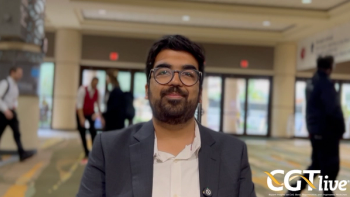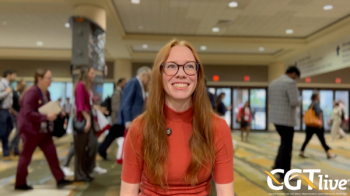
(P063) Multiple Course Stereotactic Ablative Body Radiotherapy for Non–Small-Cell Lung Cancer
Technical advances in radiotherapy (RT), especially stereotactic ablative body radiotherapy (SABR), have allowed many non–small-cell lung cancer patients once considered untreatable to be eligible for locally effective therapies. Some patients will experience recurrence or will present with multiple lung primaries. We review the success and impact of SABR in patients who have undergone multiple course therapy.
O. Kenneth Macdonald, MD, David A. Schomas, MD; Therapeutics Radiologists, Inc
INTRODUCTION: Historically, aggressive local therapy of early-stage non–small-cell lung cancer (NSCLC) in frail, elderly, or medically unresectable patients has been avoided. Technical advances in radiotherapy (RT), especially stereotactic ablative body radiotherapy (SABR), have allowed for many of those once considered untreatable to be eligible for locally effective therapies. Some patients will experience recurrence or will present with multiple lung primaries. We review the success and impact of SABR in patients who have undergone multiple course therapy.
METHODS: The records of 12 patients were identified and reviewed for clinical and treatment information. All patients received two or more courses of SABR for synchronous or metachronous primary NSCLC or for pulmonary recurrent NSCLC after previous SABR or conventional radiotherapy. The Kaplan-Meier method was used to calculate survival rates. Toxicity was evaluated and graded using Common Terminology Criteria for Adverse Events version 4.0 (CTCAE v4.0). The radiographic response was graded per Response Evaluation Criteria in Solid Tumors version 1.0 (RECIST v1.0).
RESULTS: The median age of those included was 72 years. Five patients were male. A total of 28 lesions (courses) were treated, 20 of which were biopsy-confirmed malignancy, with 18 considered to be primary NSCLC. Two patients underwent planned, synchronous SABR to two lesions within 1–2 months. Four patients were treated with a subsequent SABR course for regional or metastatic lung-limited disease at a median of 26 months following initial SABR. Six patients were treated with SABR for local recurrence following previous RT: two following SABR (median 12 months) and four following previous conventional RT (median 48 months). Twelve treatment courses were preceded by baseline symptoms (oxygen supplementation requirement, cough, pain), with four (33%) experiencing improvement of those baseline symptoms following completion of SABR. Seven patients received chemotherapy as a component of their oncologic therapy-three prior to SABR. The remainder received chemotherapy following SABR. Median follow-up was 1.3 years. The median delivered total dose was 5,000 cGy in four fractions. The rate of overall survival (OS) at 1 and 3 years was 79% and 57%, respectively. The rate of local control at 1 and 3 years was 100% and 61%, respectively. Complete response was achieved in 13 targets, and partial response and stable disease were achieved in 6 and 7 targets, respectively. Distant metastasis developed in seven patients during follow-up, at a median 13 months, to sites, including pulmonary, lymph node, liver, and adrenal gland. The 1- and 3-year rates of distant metastasis were 75% and 45%, respectively. Toxicity was mild, with grade 1 fatigue in nine with another five grade 1–2 acute toxicities (pneumonitis or esophagitis). Chronic toxicity was limited to four patients: two with grade 1 and one with grade 2 lung fibrosis, and one patient with grade 2 chest wall pain.
CONCLUSIONS: The delivery of multicourse SABR, synchronously or metachronously, in patients who otherwise would not be candidates for local therapy was safe and effective for this small cohort of patients at a community hospital. Subsequent course of SABR successfully controlled recurrent or metastatic disease with minimal added morbidity.
Newsletter
Stay at the forefront of cutting-edge science with CGT—your direct line to expert insights, breakthrough data, and real-time coverage of the latest advancements in cell and gene therapy.

















































